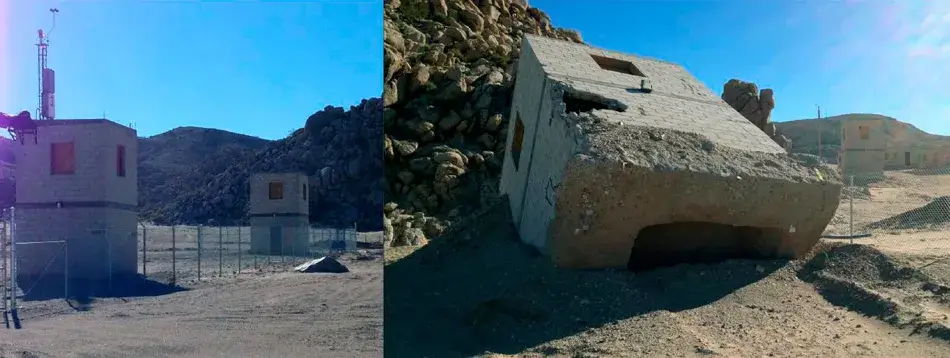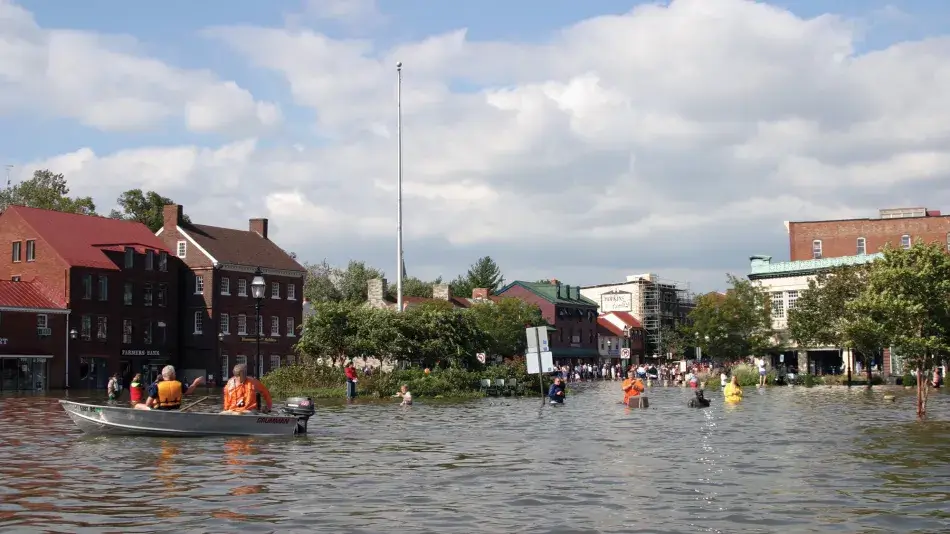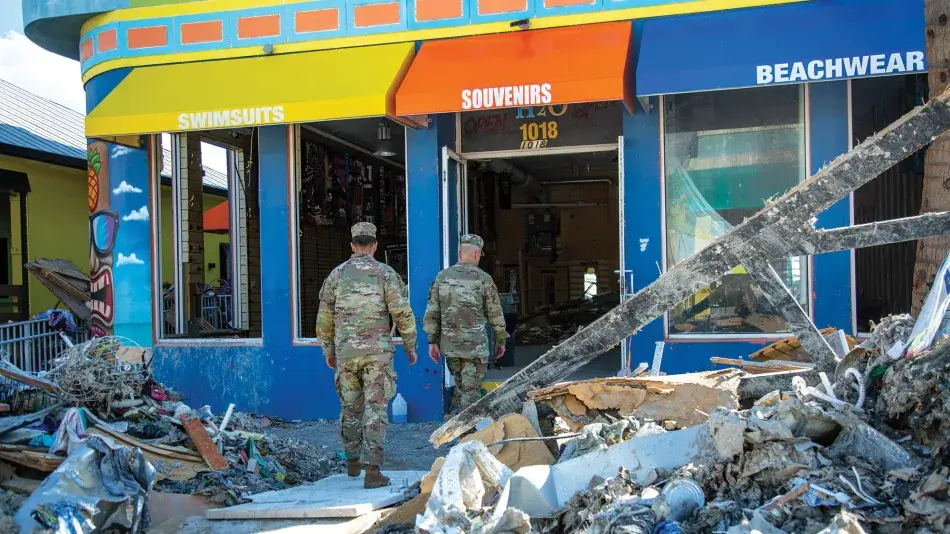Human and National Security
National Security
Climate change and human and national security are inextricably linked. Considering each in isolation is a barrier to solving the most pressing, indeed existential problems of our time. Looking through a national security lens to assess the causes and dire effects of climate change can inform and enable strategies to mitigate and counter climate change. The impact of those strategies on human security cannot be an afterthought. Our recent pandemic experience is a case in point. The human health impacts of the COVID-19 pandemic exposed the interconnected vulnerabilities to our livelihood and well-being, serving as a wake-up call for the global impact of climate change and the imperative for climate planning and action that is attuned to our national security.
While military and national security are frequently conflated, they must be differentiated in the context of climate change. To be sure, climate change will have implications and consequences for the military.1 However, the need for action goes well beyond the military and must involve stakeholders and institutions at every level. In addition to military preparedness, the challenge of climate change must be embraced as a national security issue by the entire country as broadly and tenaciously as the United States embraced the industrial challenge required to win World War II. This task requires a substantial apportionment of our economic resources and a total commitment from every member of our society, at every level: governmental (federal, tribal, state, and local); corporate (including banks and investment firms); and nonprofit (universities, grassroots organizations, and religious entities). Creating stability at home with long-term, effective planning in response to climate change is a necessary tool for achieving national security.

Political differences and emotionally charged partisan rhetoric threaten our energy transition and pragmatic responses to climate impacts. The United States and other countries have not been attuned to the consequences of failing to lead the international transition to renewable energy. Nor did we discern the consequences of China’s near monopolization of solar panel manufacturing and related supply chains.2 We have failed to respond to China’s rush to dominate the rare earth minerals market, further disadvantaging our position in energy transition.3 Recently, Russia’s aggression against Ukraine brought home the vulnerability of continued energy dependence on autocratic states, especially for our European and Asian allies. The disruption of Russian oil and gas supplies and rising prices have challenged governments’ priorities for accelerating climate action and efforts to transition away from fossil fuels.4 To create maximum stability in energy and national security, the United States must be more proactive in transitioning more of its fuel demand to renewable energy while maintaining sufficient infrastructure and production of low-carbon fossil fuels to make that transition. These international conflicts highlight the importance of anticipating climatic impacts on national security before they escalate.
To begin to address these needs, the United States passed the Inflation Reduction Act in August 2022, creating incentives for renewable energy, increasing research and development in clean technology, and driving demand for low-carbon products with federal building and transportation initiatives.5 While the act will help the United States be more competitive in a global green economy, this legislation has not been fully implemented, as funding and eligibility criteria are still in the works. The Infrastructure and Investment Jobs Act passed in 2021 also provides fiscal incentives to increase the development and implementation of renewable energy and climate adaptation measures. It will be imperative that the executive branch continues to implement this landmark legislation quickly if the United States is to legitimize its standing on the global stage and provide energy security at home.
As the country undertakes mitigation efforts, we must also consider our adaptation strategy. We must actively prepare for permanent changes to our climate and adjust procedures accordingly. For example, rethinking emergency disaster response policy, coming to grips with long-term and permanent water shortages, and planning for coastal damage as we experience more severe weather and sea-level rise—all must factor into a comprehensive national strategy to address climate change.
Human Security
The working group’s regionally focused human security approach is important because it concentrates on the stakes and responses in places where climate change impacts have and will continue to occur, and where mitigation responses must be put into practice. In considering the climate effects and responses in the Colorado River Basin and the Gulf Coast, we saw that local and regionally attuned efforts to address climate change effects are more effective, especially when they include local tribes, universities, and other nonprofits. Collectively, such regional exemplars can serve as a basis for national guiding principles and a more nuanced national approach to effective and just climate action.
The working group understood environmental justice to be the process of achieving human security equitably, and advocates that strategies and policies must be developed, assessed, and implemented through this lens. Vulnerable communities have been exposed to some of the earliest and worst impacts of climate change. About half of the tribes in the Colorado River Basin, for example, lack access to clean and safe water.6 The tribes are the most senior (highest priority) water-rights users in the river basin but suffer from inadequate infrastructure, the resistance of the U.S. government to ensure a clean water supply, and the lack of quantification of their water rights by the courts, which take decades to make such determinations.7 Along the Mississippi River between Baton Rouge and New Orleans is an area known as “Cancer Alley,” where communities must deal with adverse health consequences caused by pollution.8 Without thoughtful solutions informed by the communities who live with these adverse conditions, efforts to decarbonize and impose climate adaptation measures further threaten their livelihood, culture, and economic stability. Early climate migrants seeking to escape uninhabitable conditions likely will be forced to move to locations that will soon be ravaged by climate change. Tribal nations face the prospect of their promised homelands becoming inhospitable, wreaking havoc on tribal societies that have already endured decades of destructive federal policies of removal, termination, and assimilation.

Climate change will force unfavorable changes in lifestyle, onerous individual costs, and loss of treasured traditions. How we respond to those challenges will impact our human and national security and affect our ability to implement durable and equitable climate solutions.
The working group on human and national security identified current barriers that impact climate mitigation and adaptation and reflect the regional diversity of our nation. An appreciation of those barriers can underpin the formulation and implementation of climate legislation and policy at all levels of government. Through a series of nineteen listening sessions with human and national security experts, the working group explored barriers to climate mitigation and adaptation, specifically focusing on the Colorado River Basin and the Gulf Coast. While other regions also experience pressing climate challenges, these two case studies were chosen because they are emblematic of the diverse, multifaceted threats to human and national security, including food, water, and energy security, and supply-chain resiliency.
The working group identified three key messages:
- Action on climate change is a national security issue. Meaningfully addressing its consequences will revive the nation’s dynamism, accelerate innovation, strengthen societal resiliency, and rebuild trust in government institutions.
- A lack of baseline data and modeling on a sufficiently granular, regional basis, plus a lack of relevant, adequate research, is impeding action, and laboratory successes are not being adequately scaled up to commercially viable engineering solutions and applications.
- Because the United States is so geographically diverse and the impact of climate change is varied across regions, nuanced and local approaches to climate adaptation are impactful and necessary
